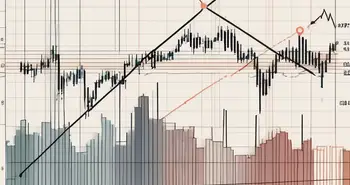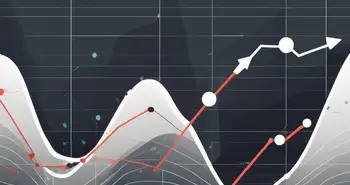Falling Three Methods: Unveiling Three Effective Techniques

In the world of pattern recognition and technical analysis, the falling three methods is a powerful tool for traders. It provides valuable insights into price movements and can be used to make informed decisions. In this article, I will unveil three effective techniques for utilizing the falling three methods pattern. By understanding the basics, identifying the pattern, timing your entry, and managing the associated risks, you can maximize your success in trading.
Understanding the Falling Three Methods
Before diving into the techniques, let's explore the fundamentals of the falling three methods pattern. This pattern is considered a bearish continuation pattern, meaning it suggests that a downtrend is likely to continue. It consists of five candlesticks, with the second, third, and fourth being smaller and contained within the range of the first and fifth candlesticks.
The falling three methods pattern indicates that sellers are still in control and that the downtrend is likely to resume after a brief consolidation. By recognizing this pattern, traders can anticipate future price movements and adjust their strategies accordingly.
The Basics of Falling Three Methods
To identify a falling three methods pattern, traders need to look for specific characteristics. The first candlestick should be a long bearish candle that represents a strong selling pressure. The subsequent three candles should all be smaller and contained within the range of the first candle. Finally, the fifth candle should be a continuation of the initial downtrend.
The Importance of Falling Three Methods in Trading
Understanding and utilizing the falling three methods pattern is vital for traders. It allows them to identify potential opportunities for short-selling or exiting long positions. By recognizing this pattern, traders can align their strategies with the prevailing market sentiment and increase their chances of success.
Additionally, the falling three methods pattern can be useful in confirming other technical indicators or analysis techniques. Combining multiple signals can provide a more robust and comprehensive understanding of the market and enhance decision-making processes.
Technique One: Identifying the Pattern
The first technique focuses on how to identify the falling three methods pattern accurately. Pay attention to the candlestick formations and take into account the specific characteristics mentioned earlier. It's crucial to have a clear understanding of what constitutes a valid pattern to avoid false signals.
Key Characteristics of the Pattern
One key characteristic of the falling three methods pattern is the size and shape of the individual candlesticks. The first candle should be significantly larger than the subsequent three candles, indicating a strong selling momentum. The smaller candles within the range of the first candle illustrate a decrease in selling pressure, signaling a potential consolidation.
Another characteristic to consider is the overall trend. The falling three methods pattern has more significant significance when it occurs within an established downtrend. This confluence of factors enhances the pattern's reliability and increases the likelihood of a continuation in the downward movement.
Common Mistakes in Pattern Identification
While identifying patterns might seem straightforward, there are common mistakes that traders should be aware of. One mistake is misinterpreting small retracements within an overall upward trend as falling three methods patterns. Remember that this pattern is specifically a bearish continuation pattern and should occur within a downtrend.
Another common mistake is assuming that the falling three methods pattern always guarantees a certain outcome. While it suggests a continuation of the downtrend, it should be considered with other technical analysis tools and indicators to make a fully informed trading decision.
Technique Two: Timing Your Entry
Timing is crucial in trading, and the falling three methods pattern can help determine optimal entry points. By analyzing the pattern's characteristics and considering other indicators, traders can increase their chances of entering positions at advantageous price levels.
The Role of Timing in Falling Three Methods
The falling three methods pattern provides insights into potential market reversals and continuation of downtrends. Timing your entry based on this pattern can help increase the probability of catching a strong bearish move. By entering a position during a consolidation phase, traders can take advantage of an anticipated price drop.
Strategies for Perfecting Your Timing
One strategy to enhance your timing is waiting for confirmation of the pattern. This can be done by monitoring the price action after the fifth candlestick. If prices continue to fall and the downward trend persists, it confirms the pattern's validity. Waiting for confirmation reduces the risk of false signals and provides stronger trade setups.
Additionally, combining the falling three methods pattern with other technical analysis tools, such as support and resistance levels or momentum indicators, can further refine your entry timing. By considering multiple factors, traders can increase their confidence in their trading decisions.
Technique Three: Managing Risk and Reward
Effective risk management is crucial for traders, and it's no different when utilizing the falling three methods pattern. By minimizing risk and maximizing potential reward, traders can position themselves for long-term success.
Balancing Risk and Reward in Falling Three Methods
One way to balance risk and reward is by setting appropriate stop-loss levels. Placing a stop-loss slightly above the fifth candlestick's high can help protect against potential losses if the pattern fails. It's important to use proper risk management techniques to limit exposure and protect your trading capital.
Another aspect of risk management is adjusting your position size based on your risk tolerance and the potential reward of the trade. This can help ensure that each trade aligns with your overall risk management strategy and optimizes your profit potential.
Tips for Effective Risk Management
To effectively manage risk, consider diversifying your trading portfolio. By spreading your investments across different assets or markets, you can reduce the impact of any single trade. Diversification can help minimize risk and protect against unexpected market movements.
Additionally, continuously monitoring your trades and adapting your risk management strategy as market conditions change is crucial. Markets are dynamic, and adjusting your approach to reflect evolving conditions can help preserve capital and increase the likelihood of long-term success.
Conclusion: Maximizing Success with Falling Three Methods
In conclusion, the falling three methods pattern is a valuable tool for traders. By understanding the basics, identifying the pattern, timing your entry, and managing risk, you can enhance your trading strategy and increase your chances of success.
Recap of Techniques and Their Importance
Technique one focuses on accurately identifying the falling three methods pattern, which provides valuable insights for decision-making. Technique two emphasizes the role of timing in trading, helping traders enter positions at optimal price levels. Technique three highlights the importance of effective risk management to protect against potential losses.
Future Prospects of Using Falling Three Methods
As markets evolve and patterns change, it's essential to stay updated with new techniques and adapt your trading strategies accordingly. Continuously improving your skills and staying knowledgeable about the falling three methods pattern can help position you for success in the future.
FAQ
What is the falling three methods pattern?
The falling three methods pattern is a bearish continuation pattern consisting of five candlesticks. The second, third, and fourth candles are smaller and contained within the range of the first and fifth candles. It suggests that a downtrend is likely to continue.
How can I accurately identify the falling three methods pattern?
To identify the falling three methods pattern, pay attention to the candlestick formations. Look for a long bearish candle followed by three smaller candles within its range. The fifth candle should continue the downtrend. Confirm the pattern by considering the overall trend and other technical indicators.
How can I time my entry using the falling three methods pattern?
Timing your entry involves analyzing the pattern's characteristics and considering other technical indicators. Waiting for confirmation and combining the falling three methods pattern with support and resistance levels or momentum indicators can help refine your entry timing.
How can I manage risk and reward when trading the falling three methods pattern?
Effective risk management involves setting appropriate stop-loss levels and adjusting position sizes based on risk tolerance and potential rewards. Diversifying your trading portfolio and continuously monitoring your trades are also key aspects of risk management.
Remember, successful trading requires practice, discipline, and continuous learning. By utilizing the falling three methods pattern and implementing these techniques, you can enhance your trading strategy and increase your chances of success in the dynamic world of financial markets.
Ready to put the Falling Three Methods pattern into action? Join Morpher, the revolutionary trading platform that empowers you with zero fees, infinite liquidity, and the ability to trade a vast array of assets. Whether you're looking to invest in fractional shares or take advantage of market downturns through short selling, Morpher's blockchain-based platform is designed to elevate your trading experience. With the added benefits of a non-custodial wallet, up to 10x leverage, and a unique trading experience with Virtual Futures, Morpher is the perfect partner for your trading journey. Sign Up and Get Your Free Sign Up Bonus today, and start trading the smart way!

Disclaimer: All investments involve risk, and the past performance of a security, industry, sector, market, financial product, trading strategy, or individual’s trading does not guarantee future results or returns. Investors are fully responsible for any investment decisions they make. Such decisions should be based solely on an evaluation of their financial circumstances, investment objectives, risk tolerance, and liquidity needs. This post does not constitute investment advice.

Painless trading for everyone
Hundreds of markets all in one place - Apple, Bitcoin, Gold, Watches, NFTs, Sneakers and so much more.

Painless trading for everyone
Hundreds of markets all in one place - Apple, Bitcoin, Gold, Watches, NFTs, Sneakers and so much more.








